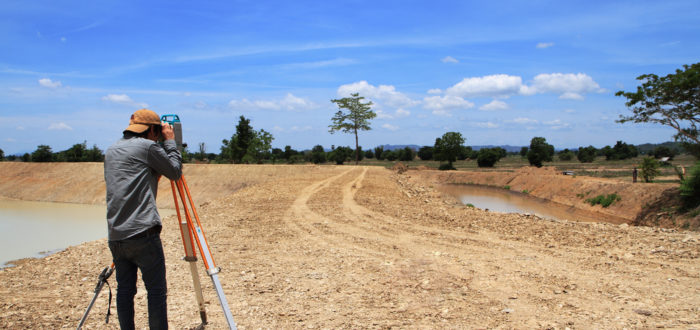Land surveying is not simply about boundaries and area. In its most basic sense, surveying does revolve around the existing boundary limits of a property, and a land surveyor is frequently deployed to determine these with expert precision. For homeowners and property developers, this is one of the most common tasks demanded of local land surveyors. Yet, surveying and land mapping is about so much more, including the multi-dimensional aspects of the earth and its terrain possibilities. For civil works projects or major construction, the topography of the land is just as important as identifying the boundaries, and perhaps even quite a bit more important.
Professionals like your Shoalhaven land surveying team at Leslie & Thompson utilise a variety of advanced tools and systems in producing accurate, detailed data in the surveying process. One of these is the digital terrain model or DTM. Today we take a look at digital terrain models and the significant role they play in surveying.
What Exactly is a DTM?
Similar to the topographical maps that have been in use for years, a digital terrain model is a digitalised version of a map that is generated by precise data points. A digital model of the ground (terrain) is created, and can be used to meet a wide range of surveying purposes. A digital surface model (DSM) is a similar tool which includes all existing structures in an area, such as trees, shrubs, buildings, and fences. By digitally removing these surface items, the DSM becomes a DTM, displaying only the necessary topographical information—just the terrain. This is often called a bare-earth model.
DTMs are created in several different ways. Satellite scanning can assist in mapping large areas through remote sensing, albeit with a low resolution. This is effective for sizable land masses, but may not be ideal for more focused projects. Alternately, DTMs can be generated through manual surveying work. Using theodolite equipment, aerial photography, GPS, and more, the gathered data points are then compiled to create the DTM. This 3D model allows surveyors and clients to visualise an area of land digitally, and through computer manipulation, potential changes to the land can be examined and tested. This offers amazing benefits for all types of projects.
Using Digital Terrain Models in Surveying
DTMs have been used to great effect in a range of situations, including flight simulators, climate studies, and more. But they can serve a purpose directly for projects involving our surveying work as well. For major projects, such as commercial builds or engineering works, DTMs can be effective in discerning the expected terrain results following a build, simulating the effects of overground transport, or helping to design entire subterranean water systems. In an environmental sense, the DTM can assist developers to measure the ecological impact of a project. This could be a vital part of selecting the appropriate properties for development and ensuring sensitive areas remain protected.
Construction projects can utilise the data supplied by a DTM to assure a safe, stable build. With the complete information available, a land surveyor can offer a client the necessary details to ensure a timely, effective project outcome. This saves time, money, and stress.
It’s important at any level to choose the Shoalhaven surveying professional who will get the job done right. If you’re seeking a team to produce a reliable digital terrain model or to perform any other of the important work only a licensed surveyor can accomplish, Leslie & Thompson is the provider you can depend on. Call us today to discuss your needs in more detail.

